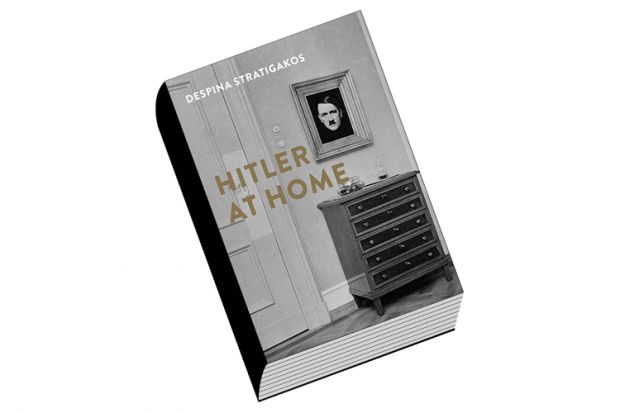Politicians’ homes speak – as Ed Miliband found out to his cost during the last general election campaign. Yet anyone who thinks that our fascination with the domestic interiors and designs of the ruling elites is a new phenomenon, and the product of a uniquely trite contemporary media culture, should think again.
Despina Stratigakos’ intriguing book examines how successive remodellings of Hitler’s residences in Munich, Berlin and Berchtesgaden reflected both his changing self-image and the evolution of his representation to the people. His first apartment in Munich was small and sparsely furnished; his reluctance to leave it reflected a desire to be seen as a simple “man of the people”. When book royalties permitted, however, he moved into more impressive quarters in a wealthy suburb of Munich. In the early 1930s, as he sought the respectability of a bourgeois politician and aspiring statesman, Hitler’s home took on grander trappings.
With the help of interior designer Gerdy Troost he embraced a conservative Modernist aesthetic – reassuringly German in its underlying forms, and yet distinct from the ornate, visually busy interior furnishings of the imperial era. The furniture communicated the preferences of a man who was at once in tune with tradition and resolutely of his times.
Both his official reception rooms in Berlin and the ever-expanding Berghof complex in Berchtesgaden were designed to convey to visiting foreign dignitaries that Hitler was a man of taste, judgement and, above all, moderation – and as we know, many of them fell for it. Stratigakos’ suggestion that the final planned renovations of Hitler’s reception rooms in the middle of the war can be taken as evidence that he was planning to negotiate with the Allies in pursuit of peace strikes me as a speculation too far, but certainly one looks at pictures of Neville Chamberlain taking tea with Hitler at Berchtesgaden in 1938 in a different light as a result of the author’s exposition.
What is particularly interesting about this book is the manner in which Stratigakos shows how this domestic aesthetic was communicated to a wider audience at home and abroad. Troost’s table setting designs for the Führer were exhibited at design shows, and thus served to show fashionable Germans how to emulate their leader’s choice of crockery and cutlery; Nazi court photographer Heinrich Hoffmann published a series of photo essays of Hitler the private man, with titles such as “Hitler Away From It All” and “The Hitler Nobody Knows”. Lifestyle magazines such as Innen-Dekoration and Elegante Welt carried similar features, as, indeed, did their anglophone counterpart Homes and Gardens, a fact that came back to haunt the publication only quite recently.
Most fascinatingly of all, in 1933 local resident Karl Schuster-Winkelhof was given access to Haus Wachenfeld (the original mountain house that was later developed into the Berghof) in order to produce a series of pencil sketches of the interior. The resulting publication contained sketches of Hitler’s bedroom and living room, complete with the banal paraphernalia of everyday life, which give a remarkably intimate sense of Hitler’s living quarters.
This is where, perhaps, for all the interest of the book, the author has missed a trick. The banal objects of everyday life are, after all, objects of affective attachment, and thus windows on to the subjectivity of their owner. Much as we recognise that in the more public rooms of Hitler’s residences the choice of paintings reflected how he wanted to be seen, and thus had a strong element of calculation about them, how one wants to be seen is, in itself, part of who one is. Such objects cannot be read solely as strategic choices, even when chosen by the most cynical of figures. This must be even more the case with objects found in the private rooms – in which religious images or pictures of Hitler’s mother can surely not be taken simply as gestures to the photographer and image-makers. They must have meant something to him.
Given how conventional biographers have struggled to say anything meaningful about his interior life, such objects must provide a valuable way in. Yet in this portrait of Hitler’s most intimate spaces, he remains the strangely elusive figure he has always been for historians.
Neil Gregor is professor of modern European history, University of Southampton. He is author, most recently, of How to Read Hitler (2014).
Hitler at Home
By Despina Stratigakos
Yale University Press, 384pp, £25.00
ISBN 9780300183818
Published 15 October 2015
POSTSCRIPT:
Print headline: A Führer’s house is his Reich
Register to continue
Why register?
- Registration is free and only takes a moment
- Once registered, you can read 3 articles a month
- Sign up for our newsletter
Subscribe
Or subscribe for unlimited access to:
- Unlimited access to news, views, insights & reviews
- Digital editions
- Digital access to THE’s university and college rankings analysis
Already registered or a current subscriber? Login




